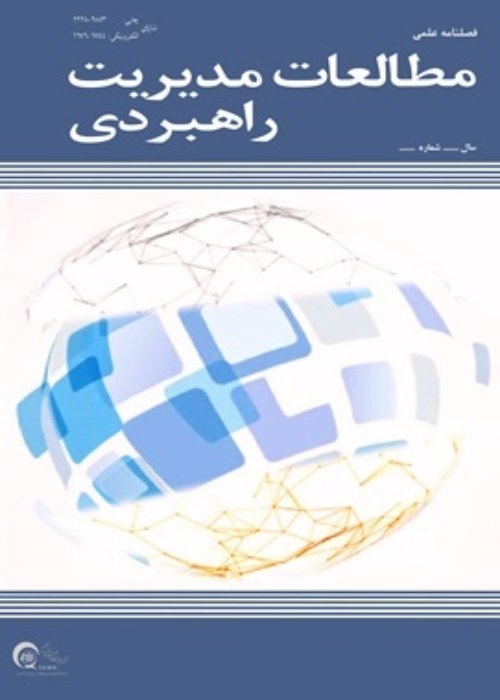Key stakeholders' perceptions toward the compliance with the lean higher education components
In recent decades, quality improvement approaches in higher education institutions have facilitated and continuously improved processes. Nevertheless, it has failed to meet the expectations of key stakeholders and academic suppliers in practice. However, some quality approaches, such as lean thinking, have a different view of continuous process improvement and have tried to pursue and resolve organizational issues. Therefore, applying the lean approach at the University has significantly reduced costs, waste, and increased satisfaction. On the other hand, the University faces some challenges such as; not doing the right actions at the right time, changes in the needs and expectations of participants, and rising university costs. The core of lean thinking is meeting or exceeding stakeholder expectations, eliminating waste, and creating a value chain across all academic processes. Therefore, the primary purpose of this study is to examine the perceptions of non-academic staff, teachers and students on the degree of compliance of the lean higher education components.
This research is practical in terms of subject, and also collecting data is quantitative (descriptive-scaling method). In the first part, using a systematic approach and research method of documentary study, 24 related research about lean higher education and university examined. Then after studying and analyzing them, 34 components identified. Formerly, without basing a particular theory, by studying and combining the existing models in this field on the one hand and selecting the components that most researchers have mentioned. On the other hand, seven components were chosen and developed based on a research tool (including 35 items). Lean higher education experts confirmed the questionnaire's validity, and structural validity was also used on the other hand. Its internal consistency was calculated from the Cronbach alpha value of 94%. The statistical population of the study includes; The total number of faculty members (350 people), experts (360 people), and students (7062 people) of the Social and Behavioral Sciences Campus of the University of Tehran in the academic year 2020-2021. The statistical population determined the statistical sample size using Cochran's random sampling method and sampling formula, 183 faculty, 185 non-academic staff, and 380 students. The results were analyzed by the SPSS and Lisrel software and the independent t-test, the confirmatory factor analysis, and the Friedman test. Thus, by creating an online questionnaire and providing a link to three relevant groups, 73 people from 183 faculties, 121 out of 185 experts, and 213 out of 360 students answered the questionnaires thoroughly(The researchers discarded incomplete questionnaires).
The results show that the most critical components of lean higher education are; Lean processes, leadership, culture, staff development, strategy, vision, resource management, and focus on key stakeholders. In this regard, the results demonstrate that critical stakeholders' perception of the degree of adaptation of the University about the components of lean higher education (all seven components) are lower than average. Finally, the results indicated that the essential components from stakeholders' view were Lean processes, Lean strategy and vision, Lean leadership, Lean culture, stakeholder focus, people development and empowerment, and resource and facility management.
Discussion and
Based on several critical factors of research’model that determine the success of implementing the concept of lean in the University of Tehran, one of which is leadership. Academic leadership must support all staff (from experts to senior managers) at all university levels, welcome the expression of ideas, and provide the necessary resources for its cultivation. On the other hand, it has the necessary power and influence to motivate people to participate in quality improvement processes, take risks, and learn from mistakes. To establish lean higher education, staff at all levels (from senior managers to experts) accept that higher education has various stakeholders. However, they keep asking themselves, how can we happier the stakeholders? This requires stakeholder ideas and feedback to monitor quality and improve academic processes. conversely, the key decision-makers and planners of the university Emphasize the principle of continuous improvement, waste reduction, and increased stakeholder satisfaction in all activities related to the planning, budgeting, evaluation processes, etc. Successful implementation of Lean Higher Education requires codified implementation mechanisms to empower human capital. On the other hand, faculty and other staff should feel proud to be part of the University and care about its success. Therefore, it is necessary to define each personal responsibility to support the unit/department and the University in achieving the objectives of the Lean approach. Based on the present study results, it is suggested that senior managers should try to improve the university climate by designing mechanisms and activities to motivate the staff and maintain their sense of loyalty and organizational commitment. In addition, risk-taking needs to be strengthened due to a changing and improving organizational climate. In contrast, it is suggested that by designing and launching the suggestion system, the ideas and feedback from key stakeholders be used to provide quality control and continuous improvement of university processes and give them feedback. Furthermore, the University's vision, mission, strategies, and goals should be designed to implement the lean-approach. In this regard, the organizational values should be defined based on continuous improvement and respect for stakeholders. In brief, the requirements for implementing the lean approach are the readiness to establish it. Hence, before designing and implementing continuous improvement programs, universities should pay attention to the critical factors of the success of the lean approach, and even before in their financial, material and human resources in the organization. Additionally, continuous quality improvement seeks input from key stakeholders on the University's level of readiness and compliance with the lean approach components. So the successful implementation of lean programs requires the full attention of academic leaders so that the organization can continue to grow and be able to build a sustainable competitive advantage.
- حق عضویت دریافتی صرف حمایت از نشریات عضو و نگهداری، تکمیل و توسعه مگیران میشود.
- پرداخت حق اشتراک و دانلود مقالات اجازه بازنشر آن در سایر رسانههای چاپی و دیجیتال را به کاربر نمیدهد.





